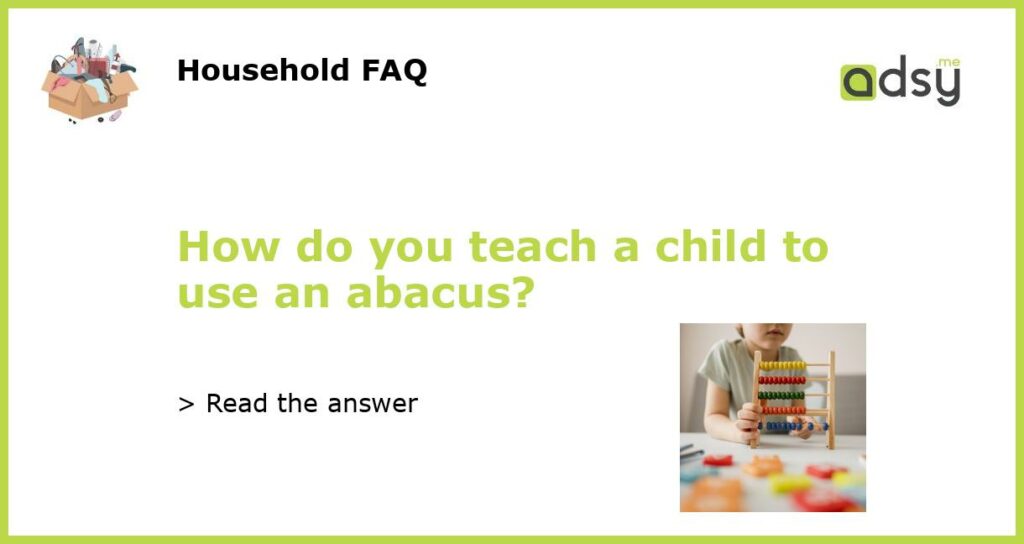What is an abacus and why is it important
An abacus is a centuries-old tool that has been used to teach children basic arithmetic skills. It is a simple device that consists of beads or disks that slide along rods or wires. By moving these beads, children can add, subtract, multiply, and divide large numbers with ease. Although it may seem outdated in today’s world of digital calculators and computers, the abacus can be a valuable tool for teaching children math skills and improving their mental calculation abilities.
Step 1: Introducing the abacus to your child
The first step in teaching your child to use an abacus is to introduce the device to them. Show your child the different parts of the abacus and explain how it works. Let your child explore the abacus and encourage them to move the beads around. This will help them to become familiar with the device and build their confidence.
Step 2: Basic addition and subtraction
Once your child is comfortable with the abacus, you can start teaching them basic addition and subtraction. Begin with simple problems, such as 1+1 or 2-1. Show your child how to move the beads to solve the problem and encourage them to do the same. Repeat these exercises until your child is comfortable with the process and can do it without guidance.
Step 3: Multiplication and division
Once your child has mastered addition and subtraction, you can move on to multiplication and division. These operations require a slightly different technique than addition and subtraction, but they are still easy to learn with practice. Show your child how to use the abacus to multiply and divide small numbers, such as 2×2 or 4÷2. Encourage them to practice until they are confident in their abilities.
Step 4: Practicing with real-world examples
After your child understands the basics of using an abacus, you can start using real-world examples to help them practice. For example, you can use the abacus to calculate the total cost of items at the grocery store, or to figure out how much change you should get back after making a purchase. This will help your child to see the practical applications of their math skills and make the learning process more engaging.
The benefits of using an abacus
Teaching your child to use an abacus may seem like an old-fashioned approach to math education, but it can have many benefits. Using an abacus can improve your child’s number sense and mental calculation abilities, as well as their overall confidence in their math skills. By following the steps outlined above and incorporating real-world examples into your practice, you can help your child develop a strong foundation in mathematics that will serve them well throughout their academic and personal lives.






